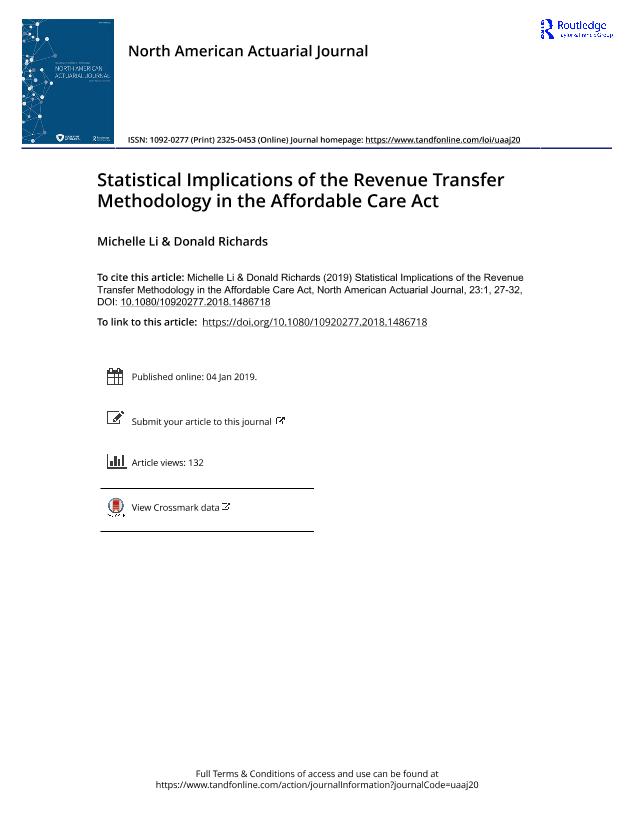Statistical implications of the revenue transfer methodology in the affordable care act

Contenido multimedia no disponible por derechos de autor o por acceso restringido. Contacte con la institución para más información.
| Tag | 1 | 2 | Valor |
|---|---|---|---|
| LDR | 00000cab a2200000 4500 | ||
| 001 | MAP20190014588 | ||
| 003 | MAP | ||
| 005 | 20190524085559.0 | ||
| 008 | 190521e20190301esp|||p |0|||b|spa d | ||
| 040 | $aMAP$bspa$dMAP | ||
| 084 | $a6 | ||
| 100 | 1 | $0MAPA20190006354$aLi, Michelle | |
| 245 | 1 | 0 | $aStatistical implications of the revenue transfer methodology in the affordable care act$cMichelle Li, Donald Richards |
| 520 | $aThe Affordable Care Act (ACA) includes a permanent revenue transfer methodology that provides financial incentives to health insurance plans that have higher than average actuarial risk. In this article, we derive some statistical implications of the revenue transfer methodology in the ACA. We treat as random variables the revenue transfers between individual insurance plans in a given marketplace, where each plan's revenue transfer amount is measured as a percentage of the plan's total premium. We analyze the means and variances of those random variables and deduce from the zero-sum nature of the revenue transfers that there is no limit to the magnitude of revenue transfer payments relative to plans' total premiums. Using data provided by the American Academy of Actuaries and by the Centers for Medicare & Medicaid Services, we obtain an explanation for empirical phenomena that revenue transfers were more variable and can be substantially greater for insurance plans with smaller market shares. We show that it is often the case that an insurer that has decreasing market share will also have increased volatility in its revenue transfers. | ||
| 650 | 4 | $0MAPA20080573867$aSeguro de salud | |
| 650 | 4 | $0MAPA20080594671$aAnálisis estadístico | |
| 650 | 4 | $0MAPA20080579258$aCálculo actuarial | |
| 700 | 1 | $0MAPA20190006361$aRichards, Donald | |
| 773 | 0 | $wMAP20077000239$tNorth American actuarial journal$dSchaumburg : Society of Actuaries, 1997-$x1092-0277$g01/03/2019 Tomo 23 Número 1 - 2019 , p. 27-32 |

